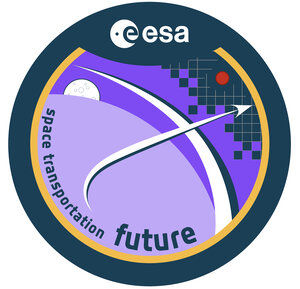Advanced GNSS Reference Station
GSTP: Make Project: Advanced GNSS Reference Station (R3B)
Company |
Country |
Website |
|
| Indra (Prime Contractor) | Spain | http://www.indracompany.com |  |
| Universitat Autònoma de Barcelona (UAB) / SPCOMNAV | Spain | http://spcomnav.uab.es |  |
The aim of the RIMS V3 Breadboard (R3B) project is the design and development of an innovative Reference Station Prototype integrating two state-of-the-art Multiconstellation Multifrequency (MC/MF) GNSS receivers.
The developed prototype can be used as the basis of:
- a MC/MF GNSS reference station as part of a GNSS reference network used in local or regional augmentation systems;
- a MC/MF GNSS monitoring station in charge of monitoring GNSS performances and detecting potential threats such as interferences.
In the frame of this project, an extensive framework for performance characterization has also been developed. This framework consists on a set of tools and functions that allow deep assessment of receiver performances from different perspectives: accuracy and integrity of the estimated PVT solution, measurements accuracy, receiver configuration capabilities, acquisition and re-acquisition performance and receiver behaviour under a wide variety of complex scenarios including different types of threats such as multipath, interference and scintillation errors, among others.
In particular, the framework has been used to characterize the receivers on scenarios relevant for EGNOS v3 requirements, to assess compliance against them.
Objectives
The main objectives of the project are:
- Development of a Reference Station Prototype/Breadboard integrating two state-of-the-art GNSS receivers
- Development of a characterization framework
- Allowing characterization of GNSS receivers against EGNOS v3 requirements;
- Being the base for a GNSS performance assessment framework allowing analysis of GNSS receiver performances as well as monitoring and detection of potential threats (interference, spoofing, etc.)
- Making use of the characterization framework to assess the compliance of two MC/MF receivers against RIMS v3 requirements.
Features

The R3B architecture integrates two complete RF chains or channels (sharing a common frequency reference) and the test tools, including the GNSS Performance characterization Framework. Each RF channel is built with a different MC/MF receiver, the Septentrio EGEP63 prototype and the NovAtel WAAS G-III respectively.
The architecture of the channels is based on the extensively proven EGNOS RIMS-A architecture, taking profit of its modularity and scalability.
R3B design allows usage of real SiS or simulated data, which has been generated using the Spirent GSS9000 plus the Agilent Interference Signal Generator (ISG E4431B) in the ESA ESTEC Radio Navigation laboratory. We would like to thank ESA staff for their support.
The GNSS Performance characterization Framework, integrated within the Test Tools together with CCF/CPF emulator and GNSS simulator, consists on a set of tools and functions that allows to assess receiver performances such as:
- Accuracy and integrity of the estimated PVT solution
- Accuracy of measurements provided by the receiver
- Behavior of the receiver under a wide variety of complex scenarios including different types of multipath, interference (narrowband, wideband, pulsed interference, inter-system and intra-system interference), scintillation errors, etc.
The characterization functions have been built based on MATLAB scripts and allow raw data processing from both SSN and NovAtel receivers.
The framework has been built bearing in mind flexibility and scalability features so it can also be used as the basis for a GNSS performances monitoring and threat detection system.
Project Plan
- July 2016: Project Kick-Off
- July-September 2016: revision of EGNOS v3 requirements, assessment of MC/MF receivers for RIMS v3 and selection of the two receivers for study.
- September 2016: Requirements Review (RR) and Design Review (DR)
- September 2016- January 2017: development of R3B platform.
- January 2017: R3B Platform Review
- September 2016-May 2017: characterization phase
- June 2017: Characterization Review
- May-June 2017: Elaboration of the conclusions
Key Issues
The key issues addressed in the frame of R3B project are:
- Assessment of state-of-the-art of MC/MF receiver candidates.
- Selection of two MC/MF receivers for characterization by integrating them in a RIMS v3 Breadboard.
- Development of a RIMS v3 Breadboard (R3B).
- Development of the characterization framework.
- Characterization of the selected MC/MF receivers against EGNOS v3 requirements.
Expected Main Benefits
The outcomes of the project have reported benefits at multiple levels by means of:
- A prototype of an advanced multi-constellation and multi-frequency reference station candidate for future industrialization, to be used in local or regional augmentation systems or any system relying on MC/MF GNSS reference stations;
- A characterization framework (methodology and tools) which
- can be used for the assessment or validation of receiver (from mass market to professional or geodetic receivers) performances;
- paves the way for the development of a system for the monitoring of GNSS performances and detecting potential threats (especially interferences) in real time.
Current Status
The project was successfully completed in August 2017.
Contact
| Project Manager: | Joan Clua Lara | jclua@indra.es |
|
Carrer de Roc Boronat, 133 08018 Barcelona Catalunya (Spain) |
Indra | |
| +34 934630580 | ||
| Additional Contact: | Lourdes Tavira | ltavira@indra.es |
|
Carrer de Roc Boronat, 133 08018 Barcelona Catalunya (Spain) |
Indra | |
| +34 934632159 | ||
| ESA Technical Officer: | Paolo Crosta |















 Germany
Germany
 Austria
Austria
 Belgium
Belgium
 Denmark
Denmark
 Spain
Spain
 Estonia
Estonia
 Finland
Finland
 France
France
 Greece
Greece
 Hungary
Hungary
 Ireland
Ireland
 Italy
Italy
 Luxembourg
Luxembourg
 Norway
Norway
 The Netherlands
The Netherlands
 Poland
Poland
 Portugal
Portugal
 Czechia
Czechia
 Romania
Romania
 United Kingdom
United Kingdom
 Slovenia
Slovenia
 Sweden
Sweden
 Switzerland
Switzerland

























